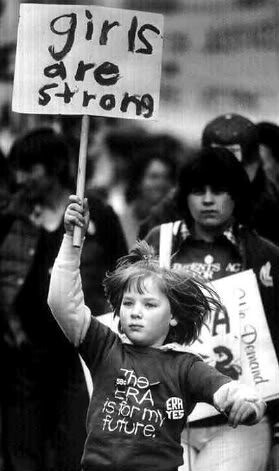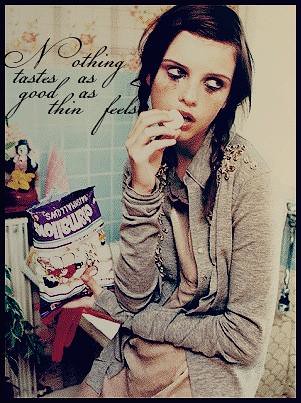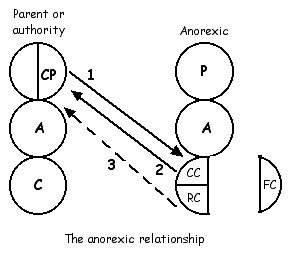does the adapted child take over as a protection for the free child?
My response:
One could say that the AC protects the FC. If a child is confronted with adverse parenting its first thought is to survive. It will make a decision on what it needs to do so as to survive physically and psychologically.
For instance, a child does not eat its dinner to which mother gets very angry and hits it. The child is then forced into a position where it has to make a decision on how to survive. That decision can be anything and they will vary widely between children. The decision results in the Adapted Child behaviour. The Free Child part of the youngster senses danger and thus it makes some adaption to the environment as a response to that danger.
For instance the child may decide that mother’s anger is very frightening so it will conform, behave and eat up all its food. It does this as a short term solution to the danger. This is the AC
Another child may decide that mummy is bad for getting angry, it is being unfairly treated and throws its plate full of food on the floor. The AC response in this case is an angry rebellious response that fights back which the child sees as its solution to the problem. This is the AC.

As we know the AC is divided into the Conforming Child (CC) and Rebellious Child (RC) ego states. Both these adapt to authority. The CC by doing what it is told and the RC by doing the opposite to what it is told. Neither is what the child wants fro itself (the FC).
Hence we end up with an eating disorder like anorexia. This person adapts to the authority by swinging between CC and RC responses to authority. At one level these people are often quite nice people who seem to conform (CC). On the other hand anorexia is one of the most basic rebellious responses a child can do to a parent. Food refusal.
Mother puts the spoon full of food into the mouth of the young child to which it closes its lips tightly. One of the most primal forms of rebellion a person can do. Mother pushes the spoon harder onto the lips to which the child squeals in defiance and ‘accidentally’ knocks the plate of food off the table onto the floor.
The anorexic is highly rebellious individual. However often when you meet them they will not appear so. This may explain why the majority of anorexics are female (95%). In our child rearing patterns open angry rebellion is usually less acceptable for girls than it is for boys. The girl has to express her rebellion in a more disguised way. She says, “I just don’t feel hungry and I can’t eat”. Angry rebellion expressed in a polite way. Whereas the rebellious boy is more likely to hit our angrily in a direct and open way.

The other feature of all this is the Free Child is no where to be seen. It has been lost long ago in the past. The anorexic and authority get deeply engrossed and locked into CP to AC transactions The FC is forgotten about.
The anorexic is not lying when she says she does not feel hungry. In this instance hunger is a function of the FC. She has been so out of touch with her FC for so long she can no longer even recognise it. Thus she does not feel the hunger sensations when they come. Thus we end up with the dynamics of the anorexic relationship.

The anorexic comes from a background where she perceives the parents to be overly controlling and authoritarian and thus perceives transactions coming from their CP to her Child ego state (1). She responds to this with two transactions at one time.
2 - she will appear to be CC and compliant
3 - underneath she is highly rebellious and uses a most primal form of rebellion against authority, food refusal.
At the same time she has become so divorced from her FC over a long period of time she no longer can even recognise when she feels hungry.
So what does the counsellor do
1. Establish a relationship with the anorexic that includes other transactions besides CP to Child. This may be hard to do as the anorexic will perceive you to be CP even when you are not. Secondly she is so rebellious that she may kill herself from starvation. This can force the authority to intervene in an authoritative way even when they don’t want to.
This is one reason why I have a general rule of thumb when working with client’s who have eating disorders. I will not spend more than 50% of the consultation discussing food, weight and eating. We will spend at least 50% of the consultation discussing other matters unrelated to these areas. Some clients find this hard to do at first because food, eating and weight is all they ever talk (and think) about.
This allows the client and me to get away from the CP to C transactions and introduce other kinds of transactions into the therapeutic relationship. Also I don’t want to have a relationship with the client that is food obsessed. I want a more normal relationship with the client were we can talk about good things sometimes that feel nice for the client and me.
2. Assist the anorexic to reconnect with her FC
If one can get some FC to FC transactions going in the therapeutic relationship then that is a very good start indeed. If this happens then the anorexic relationship is already starting to morph into something else.
Graffiti
"If one can get some FC to FC transactions going in the therapeutic relationship then that is a very good start indeed. If this happens then the anorexic relationship is already starting to morph into something else." - that's such a beautiful statement!
ReplyDeleteIs it the same for an obese person, in terms of transactions?
ReplyDeleteI am glad that you liked it Roses.
ReplyDeleteThank you for your kind comment
Graffiti
That is a short question Kahless that has a very long answer,
ReplyDeleteI will need to muse on it some more.
(I love that word 'muse'. It is so highbrow and like only for brainiacs to use).
I'm currently putting together a workshop on eating disorders and therapeutic strategies so I will have more to say on the topic. But I will only have bits and pieces to say because I can't post the whole workshop!!
Graffiti